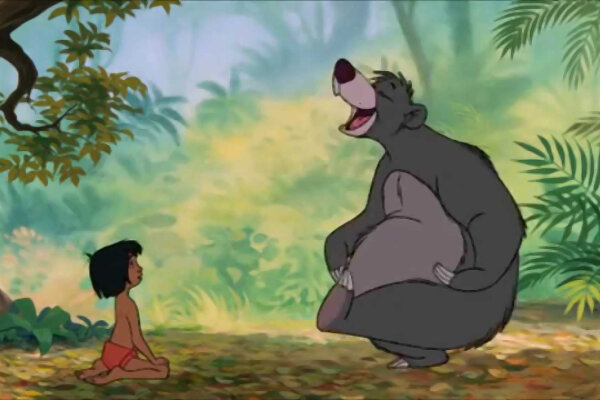2016-06-23

Do you remember how Mowgli was dancing with Baloo on the floor of the Indian rain forest? Can you imagine one of the immortal cartoons when Asterix and Obelix where returning to their village from one of their victorious battles against the Roman army? All of these scenes have one aspect in common: The smaller person is drawn on the left, creating an ascending object sequence from left to right. After encountering much similar visualizations, psychologists from the Izmir University of Economics and from the Ruhr University Bochum pondered about the possibility that this phenomenon could be explained by the mental number line. In the mental number line numbers are represented along a left-to right-oriented continuum. Consequently, smaller object are placed on the left, creating an ascending size order from left to right. To test this idea, sixty-four participants were instructed to imagine stimulus-pairs that were staggered from those showing very prominent intra-pair size differences (e.g., elephant vs. mouse) to very low size differences (e.g., orange vs. apple). Indeed, pairs of objects were imagined with the smaller one being placed on the left. In addition, the tendency to imagine the bigger object on the right side increased directly proportional to the size difference of the two stimuli. Such a bias was also present with numbers such that the participants imagined smaller and larger numbers on the left and the right sides, respectively. Together, these findings could imply that the left-to-right orientation observed in imagined objects may share the same cognitive mechanism as the mental number line. Thus, the fact that Baloo is dancing on right side of the jungle and that Obelix walks on the right side of Asterix could reflect a common cognitive mechanism that biased the imagination of the various artists who sketched these immortal scenes with a specific orientation.

Do you remember how Mowgli was dancing with Baloo on the floor of the Indian rain forest? Can you imagine one of the immortal cartoons when Asterix and Obelix where returning to their village from one of their victorious battles against the Roman army? All of these scenes have one aspect in common: The smaller person is drawn on the left, creating an ascending object sequence from left to right. After encountering much similar visualizations, psychologists from the Izmir University of Economics and from the Ruhr University Bochum pondered about the possibility that this phenomenon could be explained by the mental number line. In the mental number line numbers are represented along a left-to right-oriented continuum. Consequently, smaller object are placed on the left, creating an ascending size order from left to right. To test this idea, sixty-four participants were instructed to imagine stimulus-pairs that were staggered from those showing very prominent intra-pair size differences (e.g., elephant vs. mouse) to very low size differences (e.g., orange vs. apple). Indeed, pairs of objects were imagined with the smaller one being placed on the left. In addition, the tendency to imagine the bigger object on the right side increased directly proportional to the size difference of the two stimuli. Such a bias was also present with numbers such that the participants imagined smaller and larger numbers on the left and the right sides, respectively. Together, these findings could imply that the left-to-right orientation observed in imagined objects may share the same cognitive mechanism as the mental number line. Thus, the fact that Baloo is dancing on right side of the jungle and that Obelix walks on the right side of Asterix could reflect a common cognitive mechanism that biased the imagination of the various artists who sketched these immortal scenes with a specific orientation.